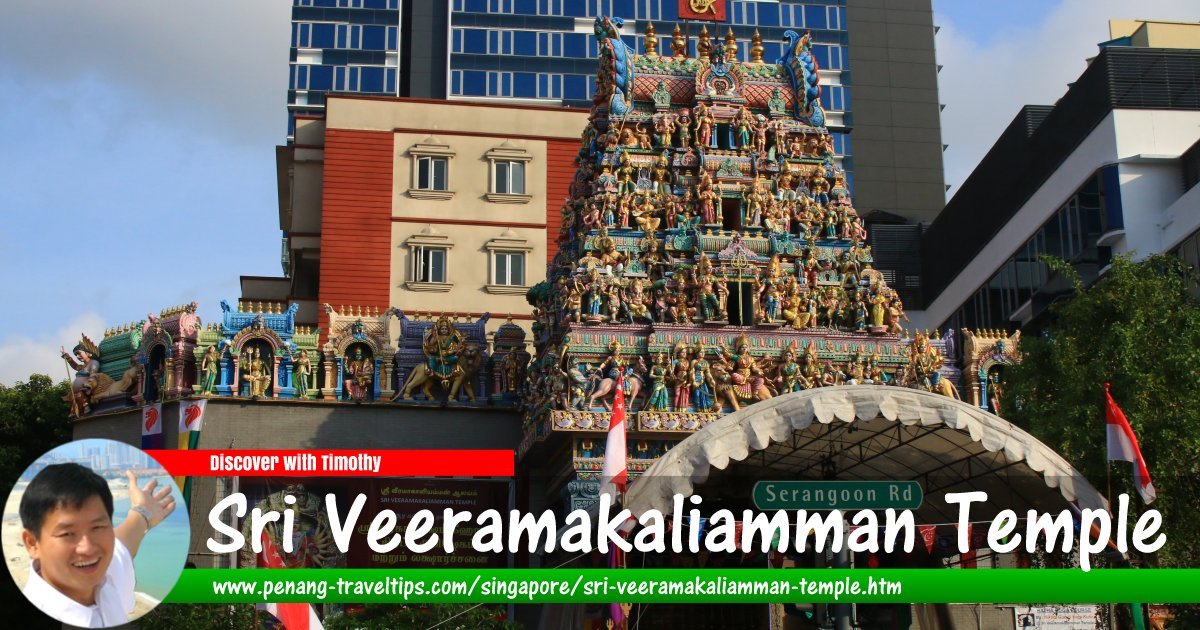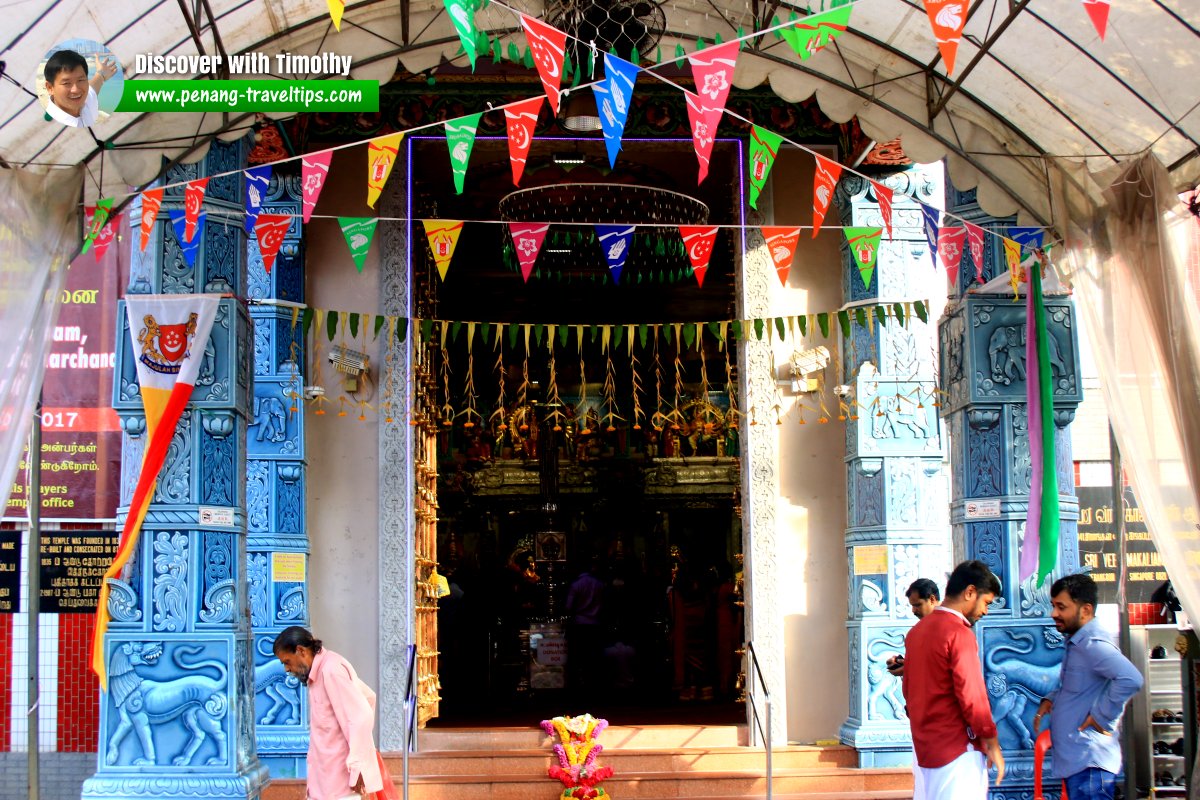 Sri Veeramakaliamman Temple, Singapore (30 July 2017)
Sri Veeramakaliamman Temple, Singapore (30 July 2017)
Sri Veeramakaliamman Temple (GPS: 1.30789, 103.85246) is one of the oldest and most popular Hindu temples in Singapore. It is located in the central section of Serangoon Road, at the heart of Little India in Rochor, Singapore. It was built by early Indians who settled around the Serangoon Road area in the earlier part of the 19th century, when the British parcelled Serangoon Road area as an Indian enclave.
The early Indian community at Serangoon Road were involved in the cattle trade. Machineries used in the grinding of wheat and the pressing of sesame oil were powered by cattle. The cattle was fed with pineapple skin that came from a nearby pineapple processing factory. Residents of Serangoon Road includes the Indians that work at the jail at used to exist at the corner of Bras Basah Road and Bencoolen Street.
Sri Veeramakaliamman began as a small shrine - the earliest Hindu shrine in that area - and expanded over the ages, becoming the nerve centre of the area which soon grew to become Little India today. By the middle of the 17th century, the number of Indians in Singapore had increased to over ten thousand. Sri Veeramakaliamman served as the focus point for the Indians living in Serangoon Road and surrounding areas. It was a place that made them feel at home. In the earliest days, the temple was known as Soonambu Kambam Kovil, or lime village temple, because many of the devotees worked at the limestone kilns in that area.
Sri Veeramakaliamman Temple is dedicated to the Hindu goddess Kali, fierce embodiment of Shakti and the god Shiva's wife, Parvati. The name Veeramakaliamman means "Kali the Courageous". The temple was built in 1881 by labourers from Bengal, where the worship of Kali has always been popular. Inside the temple is a rather graphic statue of Kali. It shows her wearing a garland of skulls and ripping out the insides of her victims. There are also more peaceful images of Kali, showing her sharing peaceful family moments with her sons Ganesh, and Murugan. The central hall of the temple dates to 1953. One of the earlier statues of Kali dates to 1908.
Although it was built by Bengalis, the Sri Veeramakaliamman Temple was built according to South Indian Tamil style, as opposed the style of temples in Bengal.
Sri Veeramakaliamman Temple underwent an overhaul in 1983, when the entire structure was rebuilt. In the midst of the reconstruction, workmen discovered ancient pieces of statues which may date to the 19th century. These were the locally made figurines, as the later ones were imported from India. The new temple was completed at a cost of $2.2 million. It has a huge rajagopuram (entrance tower) as its main feature.
Contact
Sri Veeramakaliamman Temple141 Serangoon Road, Singapore 218042
Tel: 6 2954538/6 2934634
Fax: 6 2989361
E-mail: sriveera@starhub.net.sg / kumar@sriveeramakaliamman.com
Official Website: https://www.sriveeramakaliamman.com/
Getting there
To come here direct, the nearest MRT stations are the Bugis MRT Station (EW12) and Little India MRT Station (NE7).Sri Veeramakaliamman Temple is  on the Map of Serangoon Road, Singapore
on the Map of Serangoon Road, Singapore
 Sri Veeramakaliamman Temple, Singapore (30 July 2017)
Sri Veeramakaliamman Temple, Singapore (30 July 2017)
Sri Veeramakaliamman Temple is  on the Map of Hindu Temples in Singapore
on the Map of Hindu Temples in Singapore
List of the Hindu Temples in Singapore; Discover Singapore
 Copyright © 2003-2025 Timothy Tye. All Rights Reserved.
Copyright © 2003-2025 Timothy Tye. All Rights Reserved.
Copyright © 2003-2025 Timothy Tye. All Rights Reserved.

 Go Back
Go Back